Car culture: New York’s Leila Heller assembles ‘Shrines to Speed’
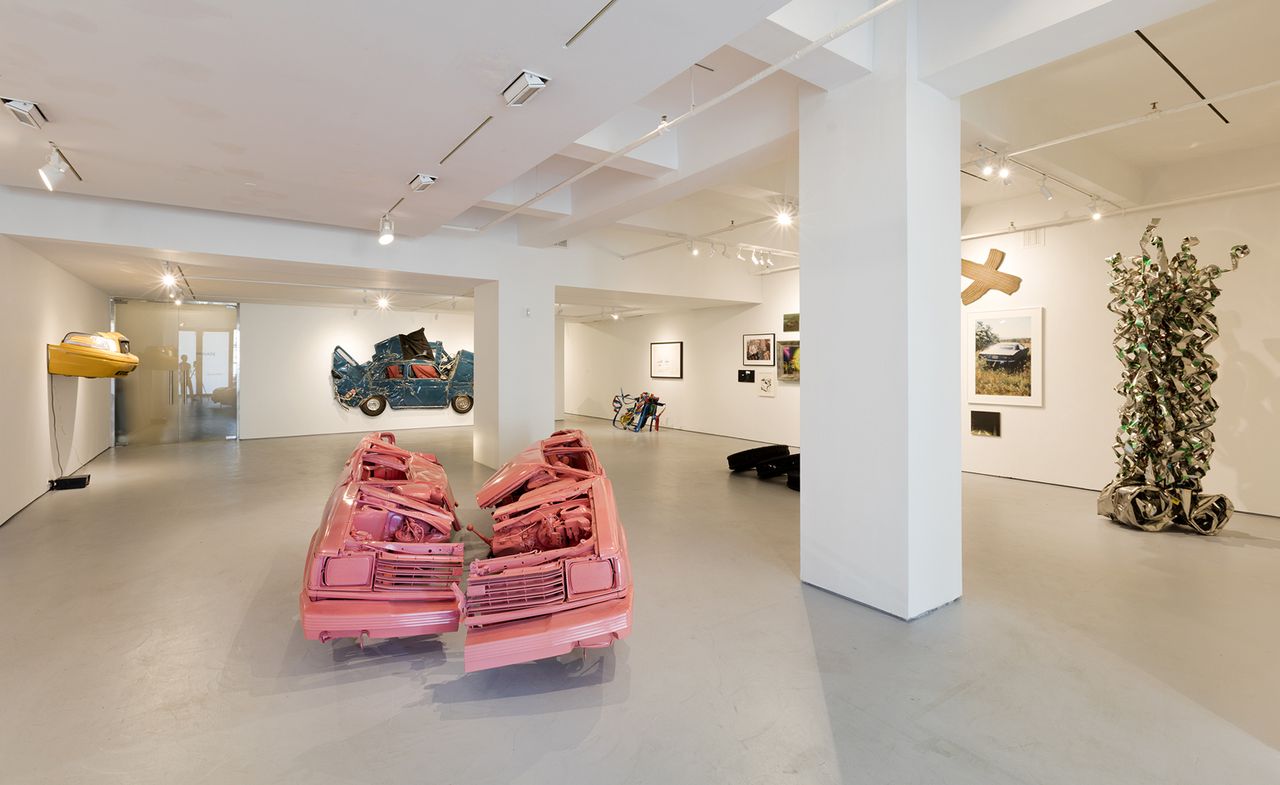
Most curators start with a wishlist of works they want to include in a show– not Alexander Heller and Vivian Brodie. The co-curators of Leila Heller’s ‘Shrines to Speed’ chose instead to take a winding journey toward their final catalogue. The resulting exhibit firmly places their show in the lane of minimalists that ‘inject meaning into an object’ and so joins the great American drive toward metaphor.
Proof that cars have become the country’s chosen vehicle of symbolism is everywhere: literature, photographs, music. Brodie –co-founder of nonprofit Y&S, and a gifted show organizer– and Heller– Leila Heller gallery director– have had the vision to bring these disparate media together in a display that, if chaotic, is deliberately so.
Highlights include Ed Ruscha’s rare publication Every Building on the Sunset Strip and Ron Arad’s Pressed Flower Petrol Blue, 2013. Exhibited for the first time is a work by Bay Area painter Richard Diebenkorn, known for his contributions to abstract expressionism. There are artists overtly associated with cars: John Chamberlain and, in recent years, Arad– as well as less expected additions, like the photography of Ruth Orkin.
You can’t talk about cars in American culture without talking about pure existential fear, perhaps best expressed in the anonymity of being pinned behind one of John Baldessari’s dots– also included in the show. Walking through the gallery, one is chauffeured toward the conclusion that the car will free you; the car will destroy you... but all will be fine, as long as you keep moving.
Heller and Brodie reference this oblivion as a key theme in the show. They find the literary equivalent in Bret Easton Ellis’ Less Than Zero when narrator Clay becomes deeply unsettled by a billboard proclaiming ‘Disappear Here.’ Clay, of course, responds by gunning his car away.
‘Shrines to Speed’ calls to mind two distinctly different types of trauma. There’s the physical event of Sylvie Fleury’s bubble gum pink wreck, rending apart the machine. But there is also the slow, gasoline-leak like seeping of the American dream out of the individual.
Or, as Brodie puts it, ‘the loneliness of chasing a dream.’
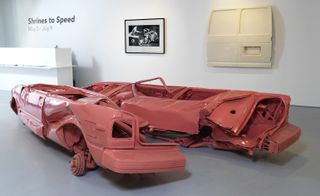
The show addresses two distinct types of trauma associated with cars in Americana: the physical and the mental. Pictured: Sylvie Fleury, Skin Crime 6, 1997
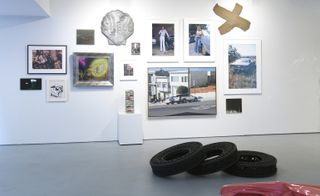
Proof that cars have become America’s chosen vehicle of symbolism is everywhere: literature, photographs, music. The curators have had the vision to bring these disparate media together in a display that, if chaotic, is deliberately so.
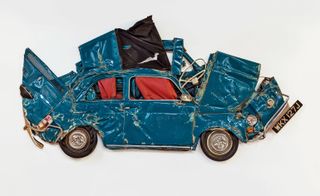
Pictured: Ron Arad, Pressed Flower Petrol Blue, 2013
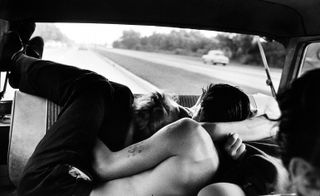
Pictured: Bruce Davidson, Brooklyn Gang (Couple necking in car), 1959
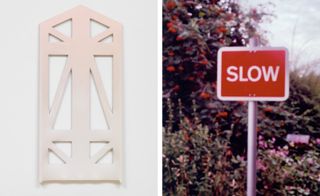
Pictured left: Blair Thurman, Goth rocket, 2014; Pictured right: Jack Pierson, Slow, 2009
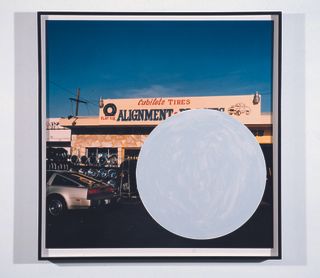
Pictured: John Baldessari, National City (2), 1996/2009
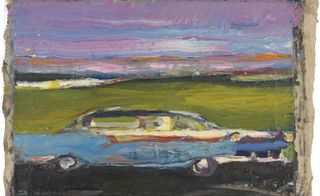
Pictured: Richard Diebenkorn, Untitled (Car), c. 1957-66
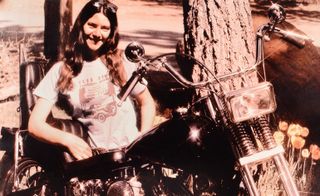
Pictured: Richard Prince, Girlfriend, From Cowboys and Girlfriends, 1992
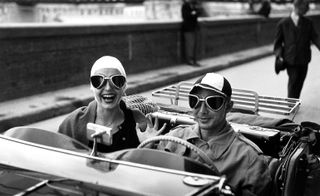
Pictured: Ruth Orkin, Couple in MG, Florence, Italy, 1951
INFORMATION
‘Shrines to Speed’ is on view until 9th July. For more information visit the Leila Heller website
ADDRESS
568 West 25th Street New York, NY 10001
Wallpaper* Newsletter
Receive our daily digest of inspiration, escapism and design stories from around the world direct to your inbox.
-
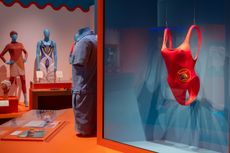 ‘Splash! A Century of Swimming and Style’ at Design Museum interrogates the loaded history of swimwear
‘Splash! A Century of Swimming and Style’ at Design Museum interrogates the loaded history of swimwearCurator Amber Butchart speaks to Wallpaper* about the Design Museum’s latest exhibition, which explores the cultural impact of swimwear – from Pamela Anderson’s bombshell ‘Baywatch’ one-piece to those made for sports, leisure or fashion statement
By Zoe Whitfield Published
-
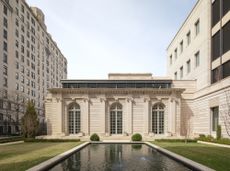 The Frick Collection's expansion by Selldorf Architects is both surgical and delicate
The Frick Collection's expansion by Selldorf Architects is both surgical and delicateThe New York cultural institution gets a $220 million glow-up
By Stephanie Murg Published
-
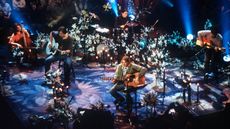 Come as you are to see Kurt Cobain’s acoustic guitar on show in the UK for the first time
Come as you are to see Kurt Cobain’s acoustic guitar on show in the UK for the first timeKurt Cobain’s acoustic guitar goes on display at the Royal College of Music Museum in London as part of an exhibition exploring Nirvana’s MTV Unplugged performance
By Tianna Williams Published
-
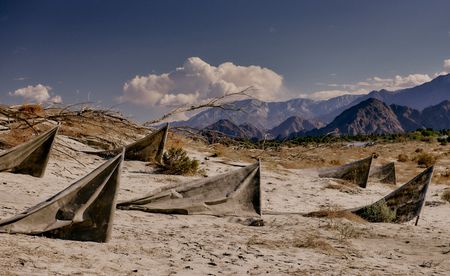 Desert X 2025 review: a new American dream grows in the Coachella Valley
Desert X 2025 review: a new American dream grows in the Coachella ValleyWill Jennings reports from the epic California art festival. Here are the highlights
By Will Jennings Last updated
-
 This rainbow-coloured flower show was inspired by Luis Barragán's architecture
This rainbow-coloured flower show was inspired by Luis Barragán's architectureModernism shows off its flowery side at the New York Botanical Garden's annual orchid show.
By Tianna Williams Published
-
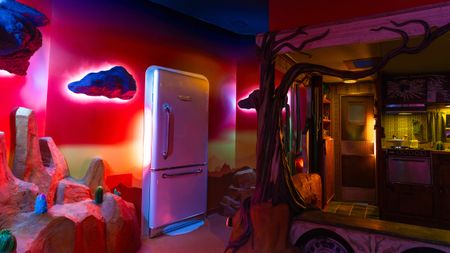 ‘Psychedelic art palace’ Meow Wolf is coming to New York
‘Psychedelic art palace’ Meow Wolf is coming to New YorkThe ultimate immersive exhibition, which combines art and theatre in its surreal shows, is opening a seventh outpost in The Seaport neighbourhood
By Anna Solomon Published
-
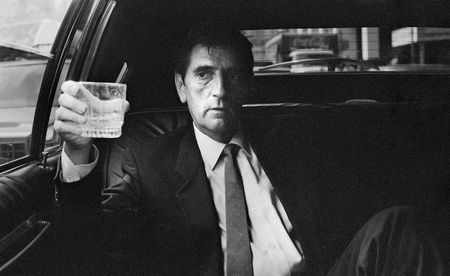 Wim Wenders’ photographs of moody Americana capture the themes in the director’s iconic films
Wim Wenders’ photographs of moody Americana capture the themes in the director’s iconic films'Driving without a destination is my greatest passion,' says Wenders. whose new exhibition has opened in New York’s Howard Greenberg Gallery
By Osman Can Yerebakan Published
-
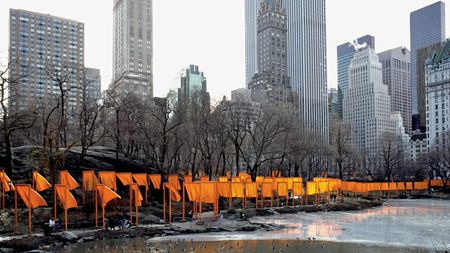 20 years on, ‘The Gates’ makes a digital return to Central Park
20 years on, ‘The Gates’ makes a digital return to Central ParkThe 2005 installation ‘The Gates’ by Christo and Jeanne-Claude marks its 20th anniversary with a digital comeback, relived through the lens of your phone
By Tianna Williams Published
-
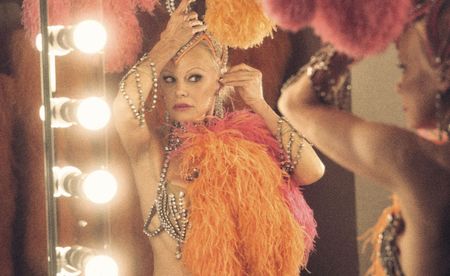 In ‘The Last Showgirl’, nostalgia is a drug like any other
In ‘The Last Showgirl’, nostalgia is a drug like any otherGia Coppola takes us to Las Vegas after the party has ended in new film starring Pamela Anderson, The Last Showgirl
By Billie Walker Published
-
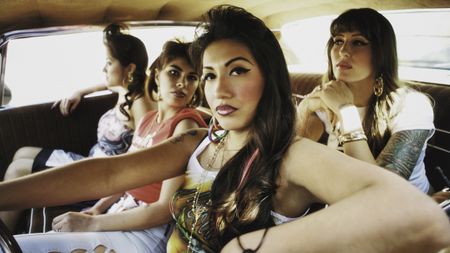 ‘American Photography’: centuries-spanning show reveals timely truths
‘American Photography’: centuries-spanning show reveals timely truthsAt the Rijksmuseum in Amsterdam, Europe’s first major survey of American photography reveals the contradictions and complexities that have long defined this world superpower
By Daisy Woodward Published
-
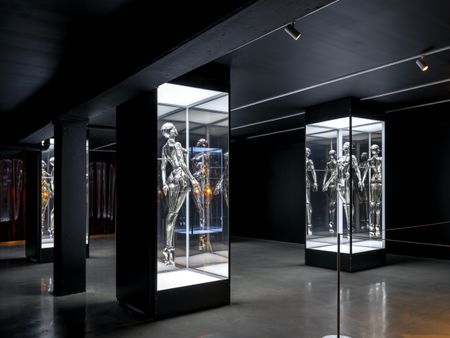 Miami’s new Museum of Sex is a beacon of open discourse
Miami’s new Museum of Sex is a beacon of open discourseThe Miami outpost of the cult New York destination opened last year, and continues its legacy of presenting and celebrating human sexuality
By Anna Solomon Published